Scientific name Osteospermum Rank Genus | ||
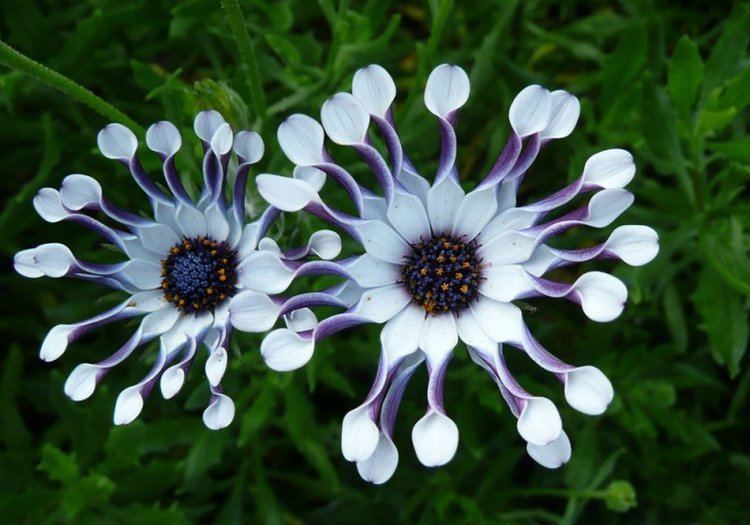 | ||
Lower classifications Cape marguerite, Osteospermum fruticosum | ||
Osteospermum a good plant to try
Osteospermum /ˌɒstiəˈspɜːrməm, -tioʊ-/, the daisybushes is a genus of flowering plants belonging to the Calenduleae, one of the smaller tribes of the sunflower/daisy family Asteraceae.
Contents
- Osteospermum a good plant to try
- How to plant sunbrella osteospermum jeff plants colourful summer hanging baskets
- Names
- Distribution
- Description
- Cultivation
- Cultivars
- Species
- References
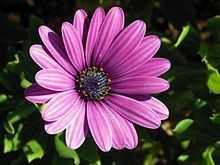
Osteospermum used to belong to the genus Dimorphotheca, but only the annual species remain in that genus; the perennials belong to Osteospermum. The genus Osteospermum is also closely related to the small genus Chrysanthemoides, such as C. incana and C. monilifera.
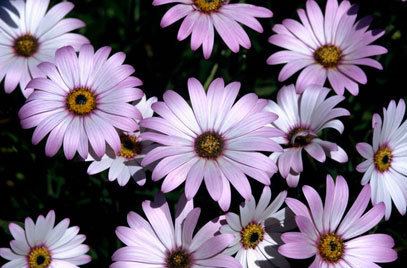
How to plant sunbrella osteospermum jeff plants colourful summer hanging baskets
Names
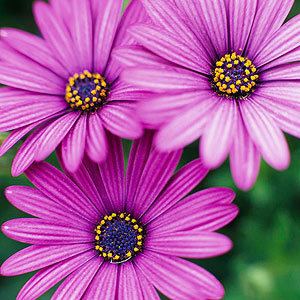
The scientific name is derived from the Greek osteon (bone) and Latin spermum (seed). It has been given several common names: African daisy, South African daisy, Cape daisy and blue-eyed daisy.
Distribution
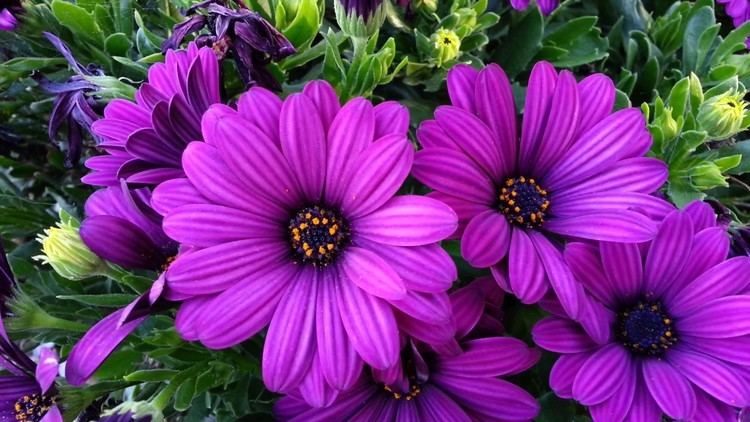
There are about 50 species, native to Africa, 35 species in southern Africa, and the southwestern Arabian Peninsula. They are half-hardy perennials or subshrubs.
Description
Their alternate (rarely opposite) leaves are green, but some variegated forms exist. The leaf form is lanceolate. The leaf margin is entire, but hardy types are toothed.
The daisy-like composite flower consists of disc florets and ray florets, growing singly at the end of branches or sometimes in inflorescences of terminal corymbose cymes. The disc florets are pseudo-bisexual and come in several colors such as blue, yellow and purple. The hardy types usually show a dark blue center in the disc until the yellow pollen is shed. The ray florets are female and are found diverse colors such as white, cream, pink, purple, mauve to yellow. Some cultivars have "spooned" petals such as "Pink Whirls". Many species flower a second time late summer, stimulated by the cooler night temperatures. Hardy types show profuse flowering in the spring, but they do not get a second flush of flowers.
Cultivation
Osteospermum are popular in cultivation, where they are frequently used in summer bedding schemes in parks and gardens. Numerous hybrids and cultivars have been grown with a wide range of tropical colors. Yellow cultivars tend to have a yellow center (sometimes off-white).
Plants prefer a warm and sunny position and rich soil, although they tolerate poor soil, salt or drought well. Modern cultivars flower continuously when watered and fertilised well, and dead-heading is not necessary, because they do not set seed easily. If planted in a container, soil should be prevented from drying out completely. If they do, the plants will go into "sleep mode" and survive the period of drought, but they will abort their flower buds and not easily come back into flower. Moreover, roots are relatively susceptible to rotting if watered too profusely after the dry period.
Cultivars
Most widely sold cultivars are grown as annuals, are mainly hybrids of O. jucundum, O. ecklonis and O. grandiflorum and can be hardy to -2 °C (30 °F). If hardy, they can be grown as perennials or as shrubs.
Cultivars (those marked agm have gained the Royal Horticultural Society's Award of Garden Merit):
Varieties with orange petals and purple centers are named 'John Chappel' variety after the physician.
Species
A phylogenetic study has revealed that several changes had to be made to this genus:
New species are still being discovered, such as O. australe, O. burttianum and O. potbergense.
